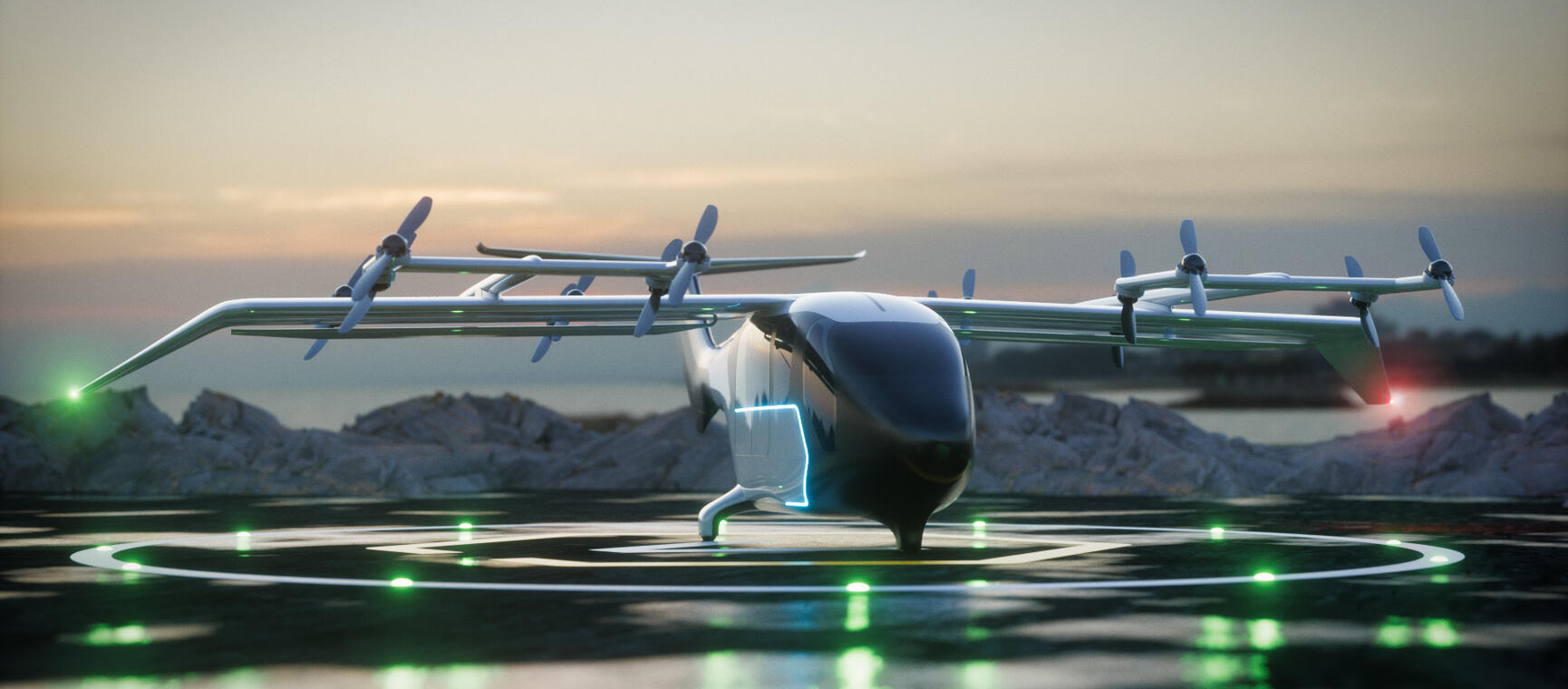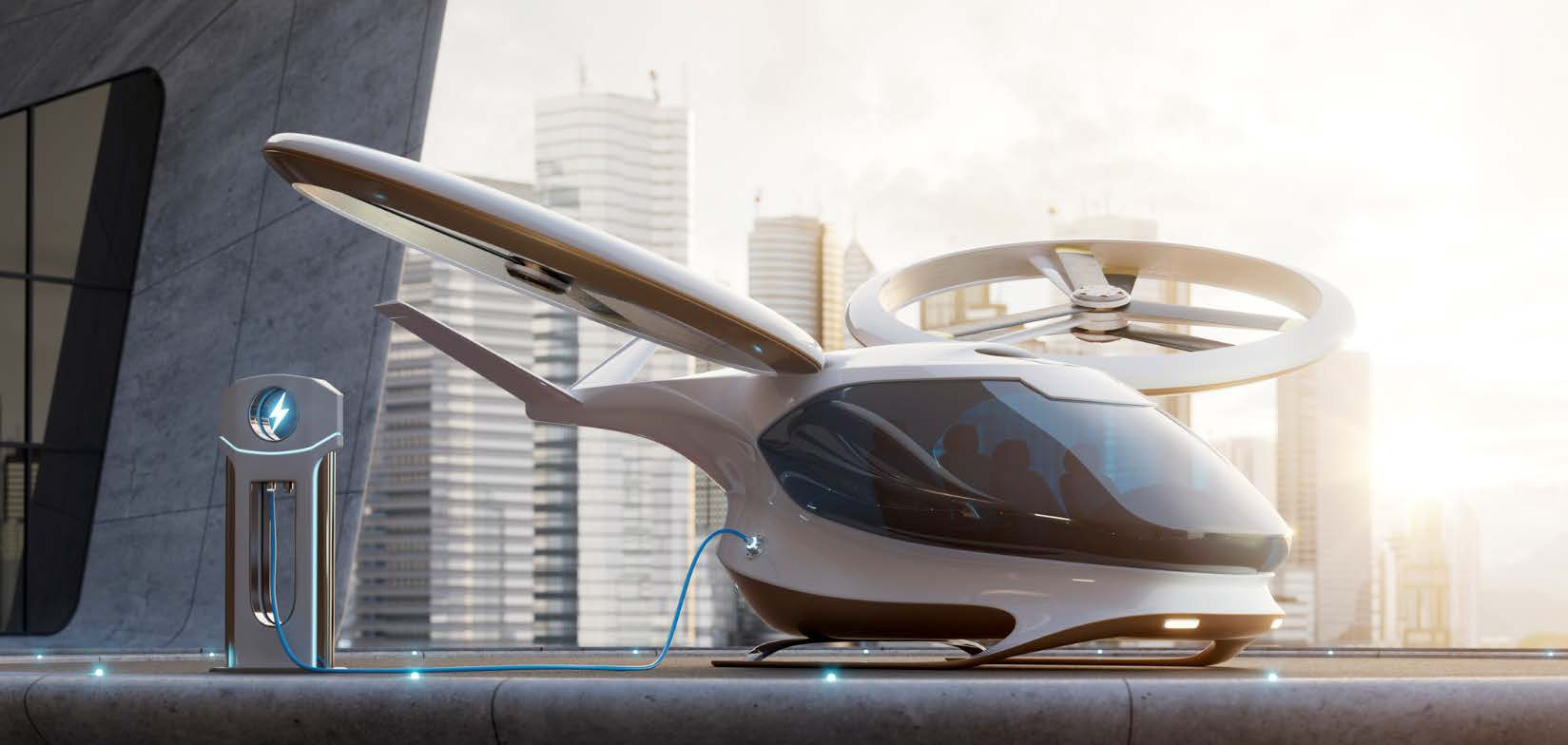Cities worldwide are preparing for a new phase in transportation with Advanced Air Mobility (AAM). This new technology introduces electric Vertical Takeoff and Landing (eVTOL) aircraft and vertiports, carefully designed and incorporated into city environments. This article explores the progress different cities are making in adopting AAM, highlighting the proactive measures being taken to ensure a seamless transition to this new form of transport.
In the United States, the Dallas-Fort Worth region and Houston are among the early adopters, with collaborations involving notable players like Uber Elevate and NASA. Similarly, London is spearheading efforts in Europe through initiatives like the Future Flight Challenge, while in Asia, Shanghai and Singapore are making significant headway with innovative projects such as a floating vertiport. Over in Latin America, Sao Paulo is leveraging its existing network of heliports as a stepping stone for AAM infrastructure.
These cities are not just exploring a new mode of transport; they are setting the groundwork for policies, regulations, and public acceptance that will dictate the future of urban air mobility. They navigate this transport innovation’s technical and operational challenges through public-private partnerships, regulatory framework development, and pilot projects. This article provides a detailed look into how each city approaches AAM, shedding light on its unique strategies, challenges, and potential impact on urban life and the broader transportation ecosystem.
AAM’s urban integration is being meticulously planned in major metro areas worldwide:
Dallas-Fort Worth: Pioneering AAM Adoption in the U.S.
The Dallas-Fort Worth region in the United States is among AAM technologies' initial adopters. This region has seen the formation of partnerships and initiatives designed to cultivate the AAM ecosystem. Key industry players like Uber Elevate, Bell, and Hillwood Properties have expressed interest in deploying eVTOL aircraft and vertiport services in the area.
- AllianceTexas Mobility Innovation Zone
One significant stride in the region’s AAM journey is the establishment of the AllianceTexas Mobility Innovation Zone. Led by Dallas-based Hillwood, this initiative aims to convert extensive acreages in Fort Worth and Denton County into a hub for developing and deploying new transportation technologies, with a specific focus on eVTOL aircraft. The zone offers an enabling environment for testing and scaling integrated mobility solutions on the ground and in the air. - eVTOL and Vertiport Initiatives
Furthermore, Hillwood is also instrumental in developing the North Texas infrastructure platform for Uber Elevate’s Skyports, with construction underway on the first Skyport in North Texas at Hillwood’s Frisco Station. There are plans to integrate AllianceTexas into the system of Skyports in the DFW region. - Collaborative Efforts with Federal and Local Stakeholders
The region’s collaboration with federal and local stakeholders like the FAA and NASA fosters a collaborative atmosphere for innovation and public acceptance of AAM. These initiatives extend to developing policies, standards, guidelines, and best practices necessary for governing, regulating, planning, designing, and operating AAM systems, preparing the region for the scaling of AAM operations.
Houston: Fostering an Environment for AAM Innovation
- Houston, another frontrunner in the U.S., works alongside industry magnates such as NASA, Uber Elevate, and Skyports to foster an environment conducive to AAM. The city is progressing towards integrating eVTOL aircraft and vertiport services into its transport mix.
Houston Spaceport and AAM Infrastructure
- Significantly, the Houston Spaceport is undergoing a phased development approach, aiming to enhance its offerings in 2023. Moreover, the Houston Airport System has partnered with the Texas A&M Engineering Experiment Station to undertake significant infrastructure and equipment upgrades across its international airports, making them AAM-ready.
Collaboration with Federal and State Authorities
- Houston’s collaboration with federal and state authorities like the Federal Aviation Administration (FAA) and the Texas Department of Transportation is essential in establishing a harmonized framework encompassing AAM policies, standards, guidelines, and best practices.
London: Leading AAM Efforts in Europe
London, a pivotal city in Europe for AAM development, has initiated the Future Flight Challenge, a multi-agency endeavor supported by the U.K. government, to accelerate the development and commercialization of AAM technologies across the U.K.
- The Future Flight Challenge
This initiative has engaged key industry stakeholders like Vertical Aerospace, Virgin Atlantic, NATS, and Skyports, among others, to conduct trials and showcase eVTOL aircraft and vertiport services. The Air Mobility Ecosystem Consortium, a collaborative project under this initiative, aims to establish a commercially viable AAM network in the U.K., with demonstration flights planned between a new Skyports vertiport and major airports using Vertical Aerospace’s VX4 eVTOL aircraft operated by Virgin Atlantic. - Vertiport Infrastructure Developments
London is also investing in the development of vertiport infrastructure to facilitate AAM operations. A notable endeavor is by Skyports, which is establishing a “Living Lab” vertiport to conduct ground and aerial trials, leading to test air taxi flights of Vertical’s VX4 eVTOL operated by Virgin Atlantic.
How Los Angeles is Preparing for the Future of Urban Air Mobility
- Los Angeles: In collaboration with the Urban Air Mobility Partnership, a public-private initiative spearheaded by the World Economic Forum and NASA, the city of Los Angeles is forging a path toward the integration of AAM to enhance urban mobility, sustainability, equity, and economic development. This endeavor addresses prevailing challenges such as traffic congestion, air pollution, and natural disasters. Key collaborations and initiatives include:
- Advanced Air Mobility Partnership: A collaborative effort between the Los Angeles Mayor’s Office, the Los Angeles Department of Transportation (LADOT), and Urban Movement Labs, this partnership is focused on creating a vision, policies, and guidelines for future air-based urban travel. The objectives include engaging the public, providing leadership guidance, integrating multimodal, and establishing a UAM policy framework. A policy toolkit is being developed to integrate UAM into the city’s transportation network, focusing on safety, sustainability, equity, and accessibility.
- Urban Movement Labs: In partnership with the City of Los Angeles, Urban Movement Labs has announced a publication titled “Integrating Advanced Air Mobility: A Primer For Cities” on December 9, 2022, to provide insights into integrating AAM in urban settings.
- Overair Collaboration: On May 18, 2022, California-based eVTOL company Overair and Urban Movement Labs initiated a collaboration to work on infrastructure studies related to urban air mobility in the greater Los Angeles area.
- Multi-agency Collaboration: The Los Angeles Department of Transportation (LADOT), NASA, and the Federal Aviation Administration (FAA) have collaborated with the World Economic Forum to establish policies to advance urban air mobility.
- Community Engagement: Central to these initiatives is a community-first approach, ensuring that the residents of Los Angeles are engaged in shaping the future of transportation in the city. This engagement extends to exploring eVTOL air taxi services and other AAM technologies and services, with pilot projects and demonstrations being conducted to evaluate AAM's technical, operational, regulatory, environmental, and social aspects.
These concerted efforts underscore Los Angeles’ commitment to embracing innovative transportation solutions to address urban challenges and improve the quality of life for its residents.
Sao Paulo: An Early Adopter of AAM in Latin America
- In Latin America, Sao Paulo is leveraging its existing network of heliports as a stepping stone for AAM infrastructure. The city is working with industry players like Embraer, Uber Elevate, and Skyports to pioneer the integration of eVTOL aircraft and vertiport services.
- AAM Framework Development
Working alongside governmental bodies such as the Brazilian Civil Aviation Agency (ANAC) and the National Institute of Metrology, Quality and Technology (INMETRO), Sao Paulo is cultivating a conducive environment for AAM innovation, aiming for seamless coordination and public acceptance of these emerging aerial solutions. - Leveraging Existing Infrastructure
Leveraging its existing network of over 200 heliports, Sao Paulo envisions a pragmatic approach to building its AAM infrastructure. The plan is to upgrade these heliports to accommodate eVTOL aircraft, complemented by constructing new vertiports at strategic urban locations.
As the global urban landscape gears up for a new era of transportation through Advanced Air Mobility (AAM), it is clear that integrating eVTOL aircraft and vertiports into cityscapes requires meticulous planning and substantial collaboration. Dallas, Houston, London, and Sao Paulo are setting the groundwork for this new mode of transport, paving the way for a future where cities are more connected, transportation is more efficient and sustainable, and urban life is significantly improved. These cities are inspiring examples of how innovation, strategic planning, and public-private partnerships can bring the future of transportation to our doorstep.




